What You Need to Know About House Finch Nesting Habits
As a birder, you know that house finches are far more interesting than their fairly common status might lead many to believe. Their nesting habits are particularly fascinating and showcase the diverse habits of this species at their finest. Here’s what you need to know about the house finch’s nesting behaviors, including their egg-laying and baby-rearing styles.
What Will Finches Use for Nesting Materials?
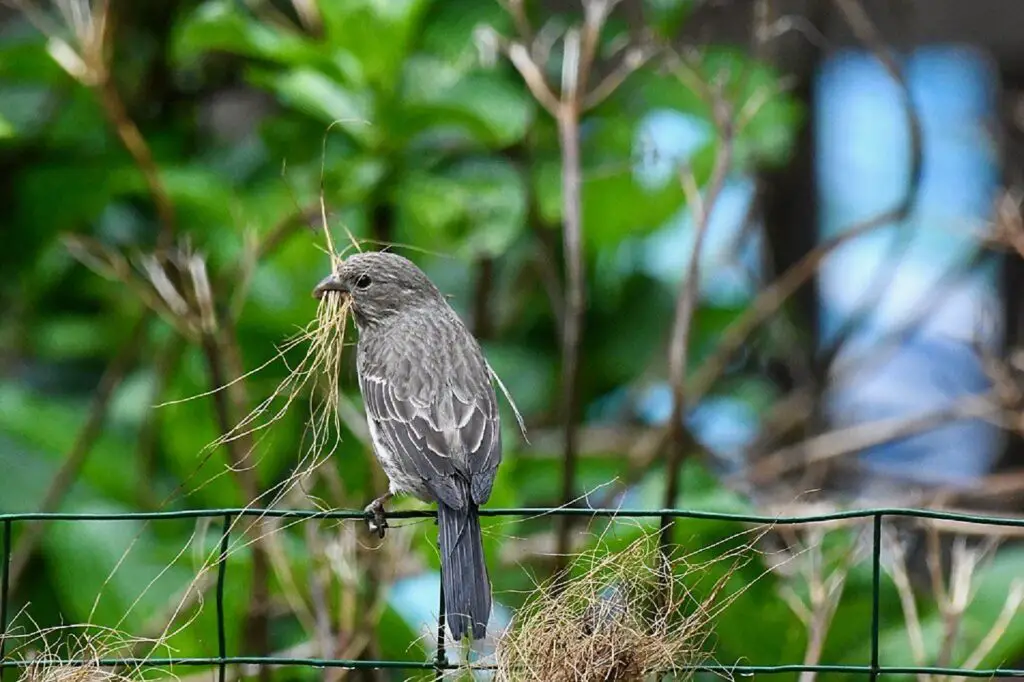
The house finch is a rather clever and adaptable species and will use just about anything that it can find to make nests. For example, they’ve been known to use shredded paper, cigarette butts, plastic pieces, cotton, feathers, animal hair, and even clothes fibers in their nests!
Like all birds, they carefully balance all these unique materials into a coherent nest that keeps them safe and provides their eggs and babies with a sheltered environment protected from predators. Furthermore, they also pick materials that match their nesting site’s color as closely as possible.
How Do House Finches Pick a Nesting Site?
House finches put a lot of effort into finding the perfect nesting site for their eggs. Animal specialists believe that the female in the mating partnership does the most work trying to find a nest, typically spending days looking for suitable sites away from potential predators in cozy and sheltered environments.
They typically work together, though, with the male often inspecting the site with the female and giving his stamp of approval. Fascinatingly, they seem to communicate together during this search to streamline their options, using various calls, dances, and gestures to let their partner know exactly what they think of the nesting site.
Where Do House Finches Nest?
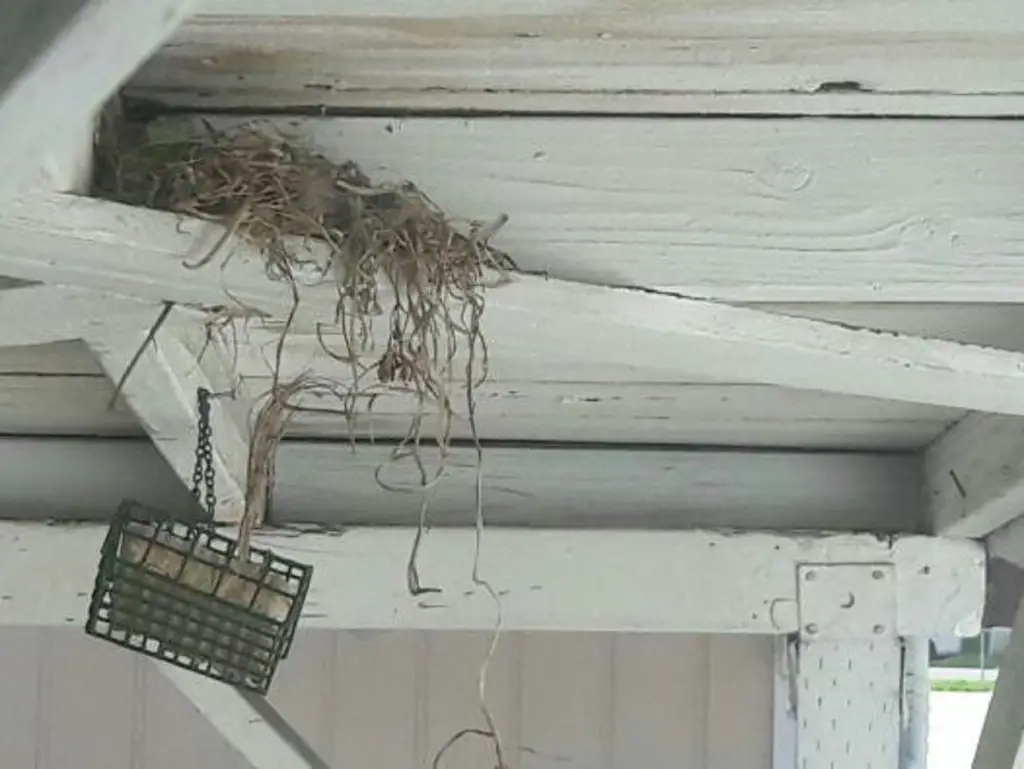
PigeonJesus, CC BY-SA 4.0, via Wikimedia Commons
When seeking out a nesting spot, the female finch typically finds a sheltered area that is as hidden as possible from predators. In the wild, they often like deciduous and coniferous trees but will also nest on rock ledges and even on cactuses, depending on their environment and on each bird’s unique preference.
However, they’re called the house finch for a reason, as they’ll often nest in areas like roofs, light fixtures, hanging plants, or even near chimneys. Some even like nesting in eaves, where the wind and rain cannot get into their nests. This step also helps to keep their babies safe from potential illness.
Do House Finches Reuse Their Nests?
If possible, the house finch will reuse the same nest as long as it can, touching it up regularly with new materials to keep it strong. Building a nest isn’t easy, and most bird species prefer hanging onto the same nest, if possible, rather than creating an all-new one. Can you blame them? Would you like to build an entirely new house every few years?
However, the house finch will abandon its nest if it gets stressed out or if they feel threatened. For example, if an eagle or similar bird moves to the area, it may abruptly leave its nest behind, including any eggs. This sad situation may even cause the finch to leave behind fledgling babies, though this is much rarer.
When Do House Finches Lay Eggs?
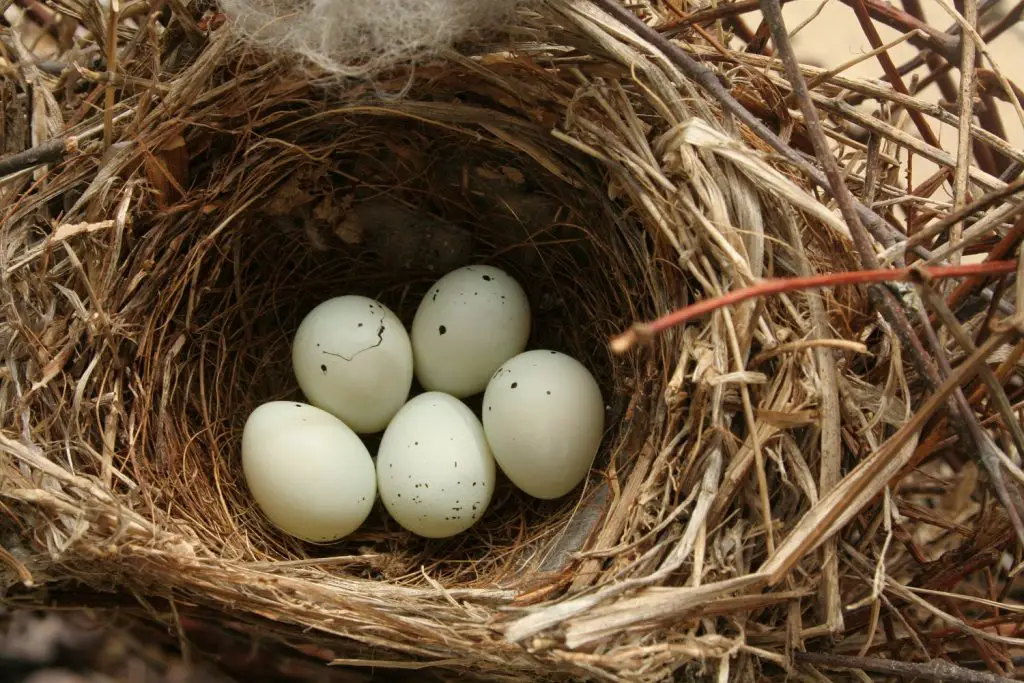
Typically, house finches start their breeding season in March and may extend it into August, depending on their broods and each bird’s personality. The male will bring nesting materials to the female, who builds the cup-like nest very carefully using whatever material the male brings. The male may help a little with the building.
The two then mate, and the female guards the eggs while the male brings food to the female. Note: the house finch may have multiple broods throughout the season because their babies mature fairly rapidly. As a result, you may see a big influx of baby house finches in your area.
Related post: How To Identify Robin Eggs
How Many Eggs Do House Finches Lay?
Typically, a house finch will lay between 2-6 blue-white eggs with each brood, depending on the specific bird and its health. Often, a finch can have three or more broods per year, varying on how quickly their babies mature and leave their nest.
So, if we use three broods as a basic average, a typical house finch lays between six to 18 eggs every year. This large laying number helps improve the chance of survival, as many of the juvenile house finches may get eaten or killed by predators.
How Long Does It Take for House Finch Eggs to Hatch?
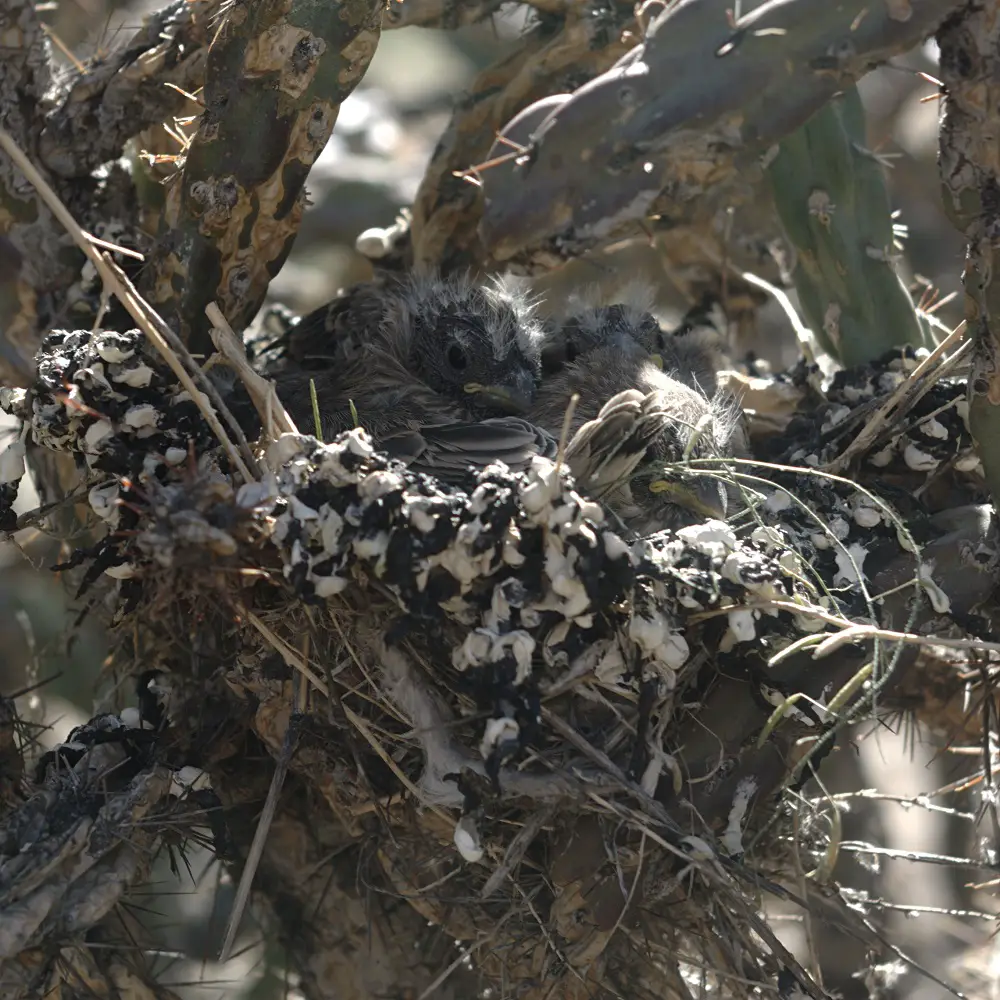
Like many birds, the house finch has evolved a fairly quick maturation process for its eggs so that it can have multiple broods in a year. If you see new house finch eggs, expect them to hatch after about 12-14 days.
During this time, the mother mostly incubates the eggs and will also attempt to fight off any invaders that may come near the nest. Typically, this hatching time varies depending on the mother, the warmth of the season, and other factors.
When Do Baby House Finches Leave the Nest?
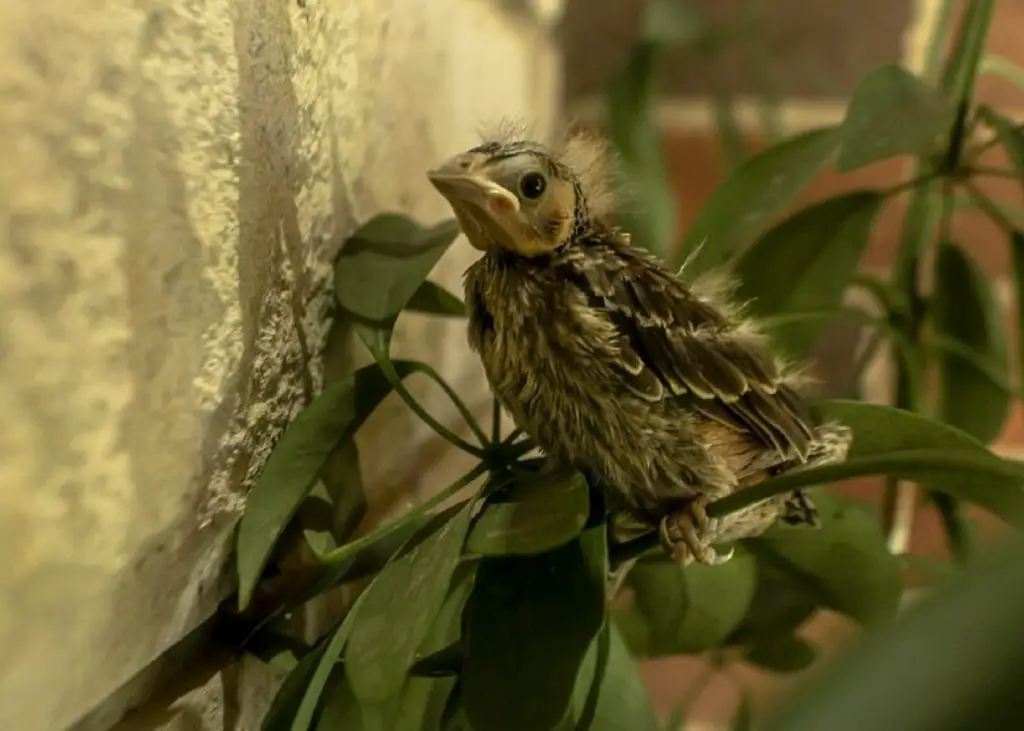
Nweiss99, CC BY-SA 4.0, via Wikimedia Commons
After the baby finch hatches, the mother and father make sure to feed them regularly to ensure that they grow properly. Amazingly, these birds should mature incredibly quickly, with most young leaving the nest after about 12-15 days!
That doesn’t necessarily mean that the house finch is full-sized or an adult at this point. Think of this period as their teen years: they’ll move out, learn to fend for themselves, and even build a nest where they can rest and stay safe.
What Do House Finches Eat?
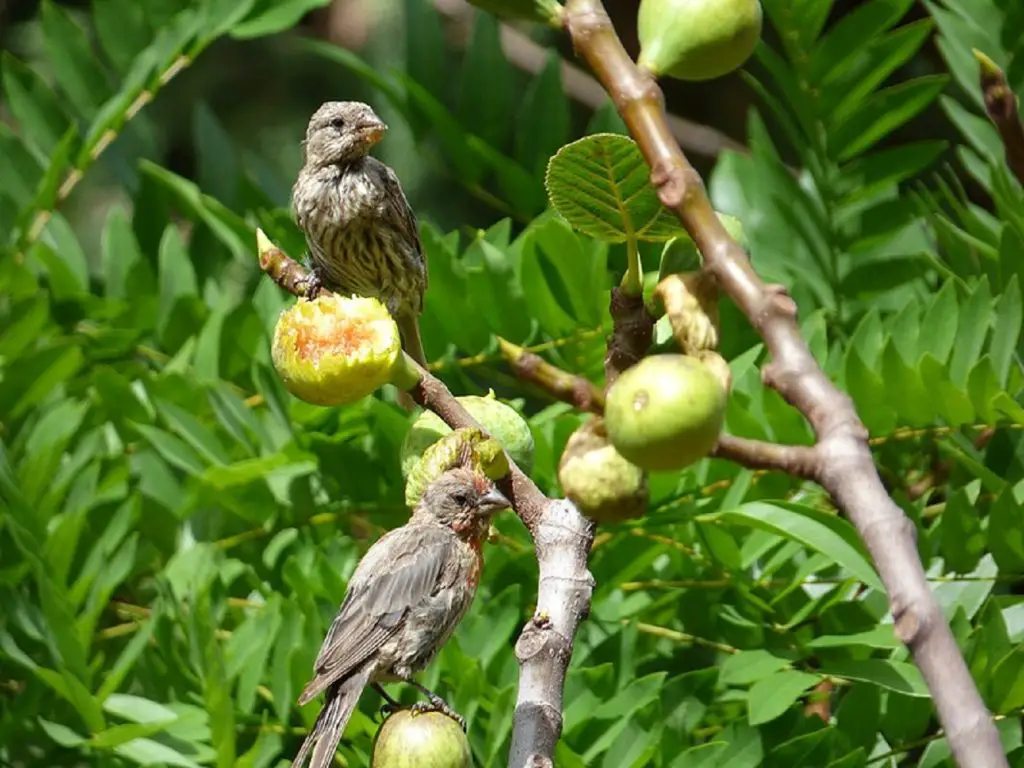
House finches have a fairly focused diet: they almost entirely eat weed seeds! About 86% of what they eat consists of seeds from dandelions, thistles, wild mustard, poison oak, mulberry, and knotweed.
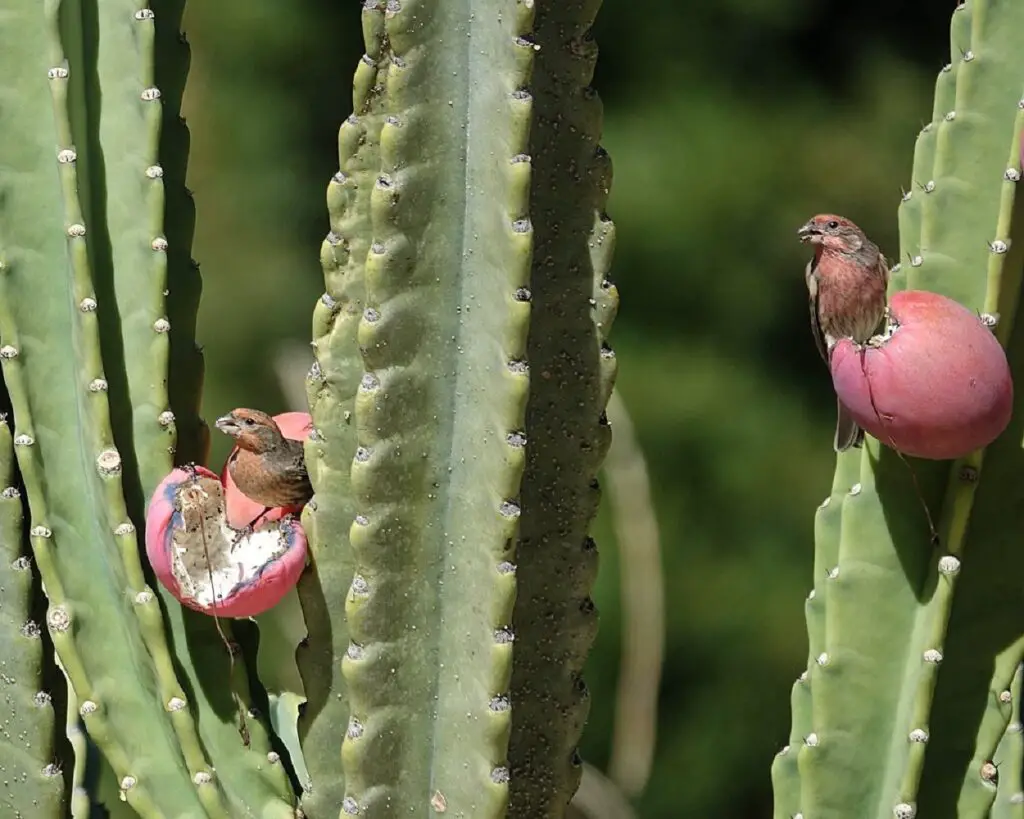
Mike’s Birds from Riverside, CA, US, CC BY-SA 2.0, via Wikimedia Commons
Though they’ll eat other types of seeds or plants when necessary, they strongly prefer these seeds. As a result, people concerned about their lawn health often love having house finches around because they’ll naturally stop weed spread and keep their lawns healthier for years to come.
How Do Finches Feed Their Babies?
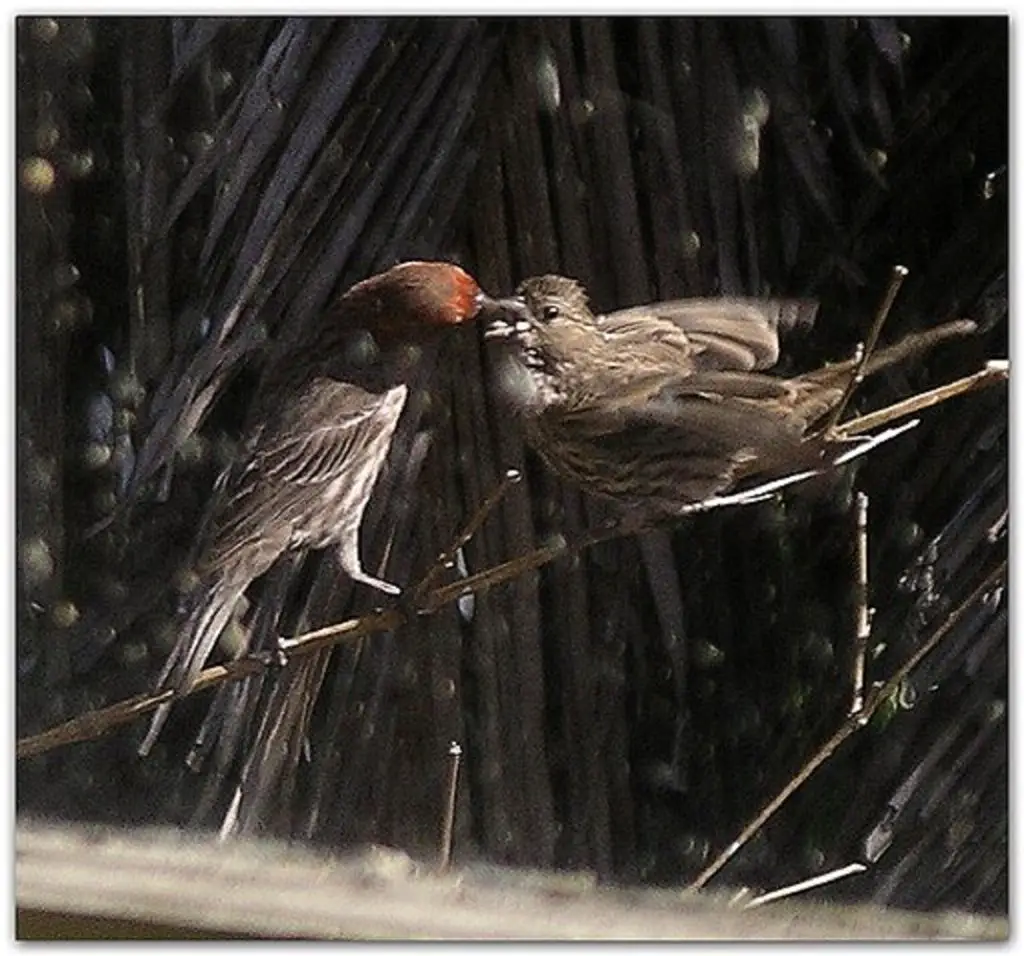
Lotusgreen, CC BY-SA 3.0, via Wikimedia Commons
A typical house finch (usually the mother) will eat seeds, plant materials, and even aphids and regurgitate the food directly into their new baby’s mouth. At this stage, the baby finch needs to be fed every 10-20 minutes when awake! As a result, their parents are in a near-constant state of collecting food, eating, and feeding the baby.
This period can be exhausting to both the mother and the father, though it is critical for the baby’s growth. If handled properly, the young ones should have the strength to leave the nest as they grow into juveniles and even adults.
Related post: Turtle Doves vs Mourning Doves – Know Their Differences!
Why Do House Finches Leave Their Nests Unattended?
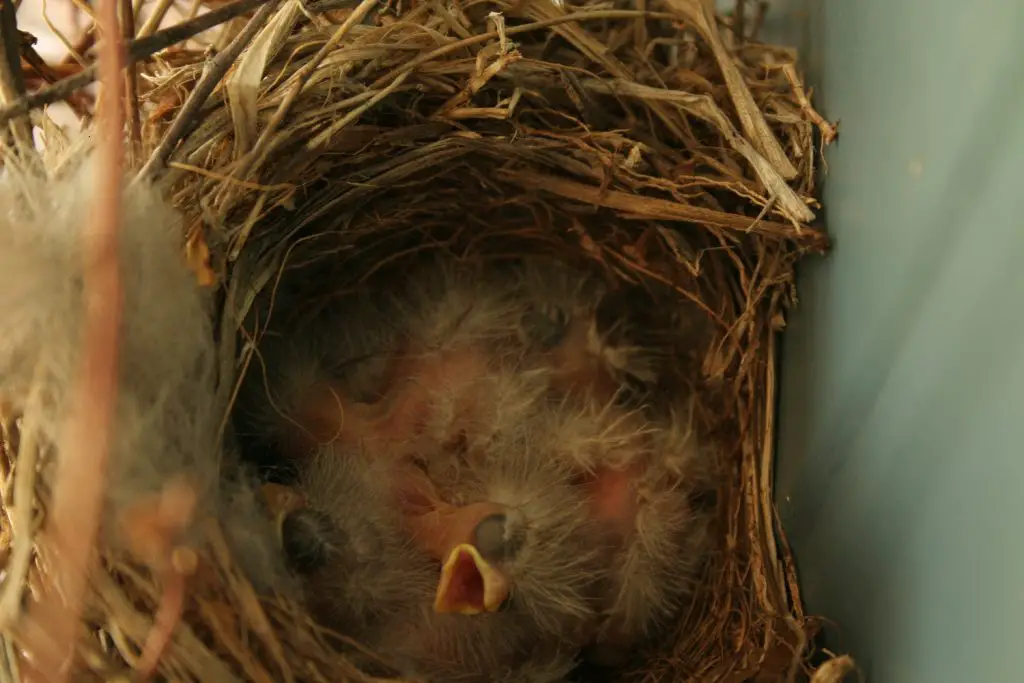
Kelly Teague, CC BY-SA 2.0, via Wikimedia Commons
House finches almost never leave their nests unattended: the mother is almost always there while the father finds food. However, there are rare situations in which you might find a house finch nest unattended.
For example, the mother may need to go help the father find food or rebuild the nest. Typically, the house finch can leave their eggs unattended for up to two weeks before they incubate them, if necessary. Unfortunately, house finches may also abandon their nests if threatened.
What is the Lifespan of a House Finch?
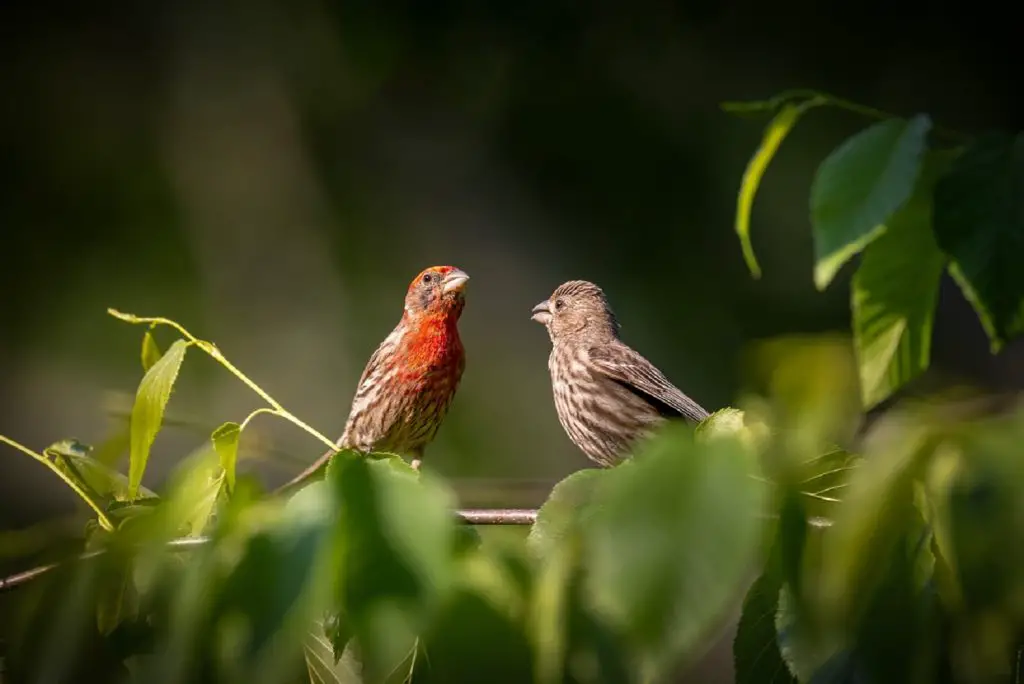
In captivity, it’s not unusual for a house finch to live up to 12 years or more because they don’t have any predators that may attack them. However, they can live up to 10-11 years in the wild if they’re careful about where they nest and somehow avoid predator animals.
That said, it’s hard for finches to live even that long, and many live much shorter lives. That’s one reason why they lay so many eggs in a brooding season: doing so helps to encourage their spread and improves their potential survival as a race.
What Should I Do If I Find a Baby House Finch?
It’s a situation many birders have run into before: finding a baby bird on the ground or alone in its nest. As a bird lover, you probably want to do whatever you can to help the little one. Well, the best thing to do is to keep your pets indoors, put the baby somewhere safe (like a perch or, if you can see it, the nest), and monitor the situation.
We promise that the parents are somewhere nearby and watching the baby. Don’t worry: the parents won’t abandon the baby if you touch it! That’s just a myth that seemingly won’t die. It undersells the intelligence of birds and their attachment to their young ones.
How Can I Identify Young House Finches?
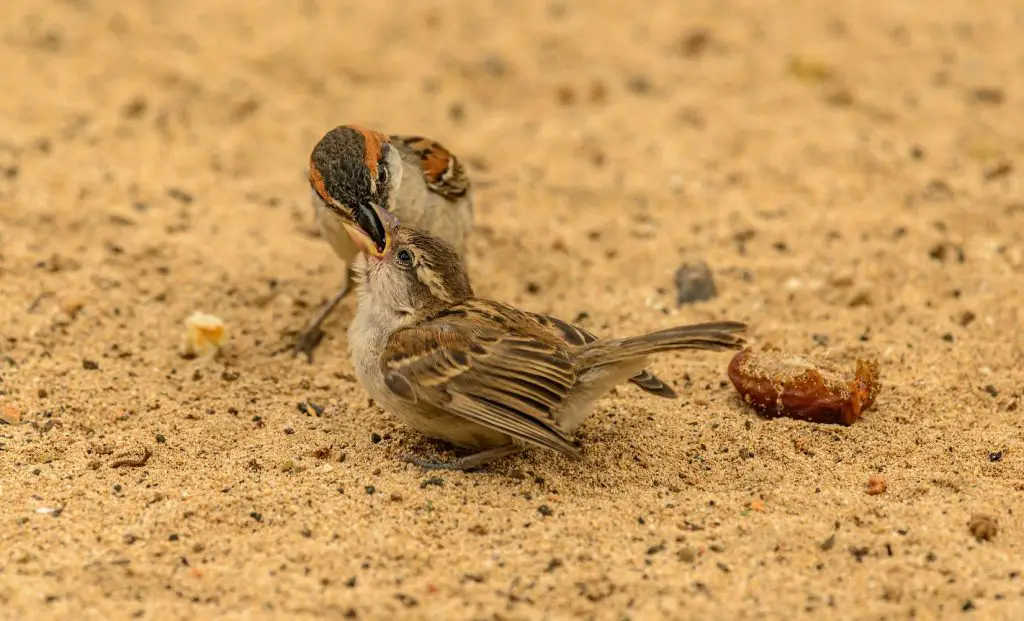
A baby house finch will lack the plumage of its parents and will be very small. Once feathers start coming in and the baby learns how to walk and hop, it starts resembling the adult house finch a little more. Expect rather dull colors (particularly in the females, which have brown and white hues that help them blend in with the environment) and slight reds and yellows in the males.
Honestly, the young house finch should look pretty similar to their parents, with only minor differences in size, color, and feathers. Typically, they’re a little “fluffier” before maturing fully, which makes them rather cute.
Wrap Up: All About House Finch Nesting Habits
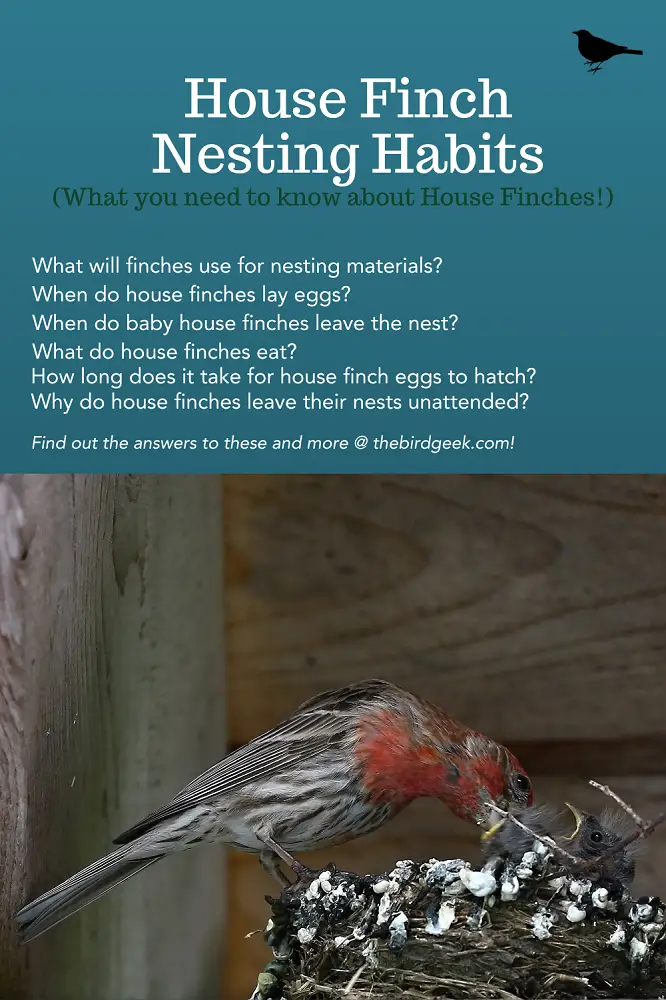
House finches, like every other bird species, seek the best nestling spots and care for their young ones. We hope we’ve answered your questions about their nesting behaviors.
Do you have other trivia questions about house finches? Let us know in the comments!
Related post: Some situations might require removal of house finches. Here are tips on how to get rid of house finches!